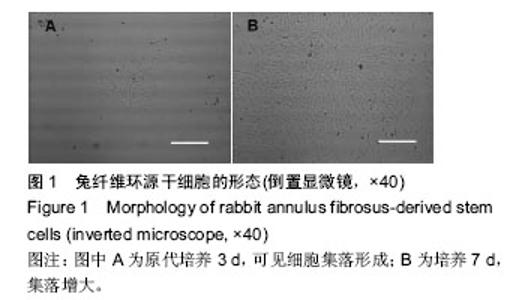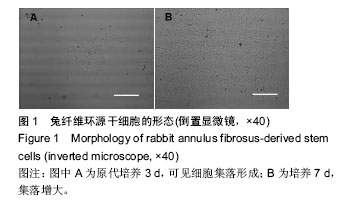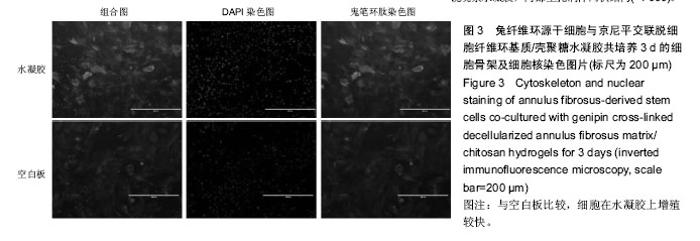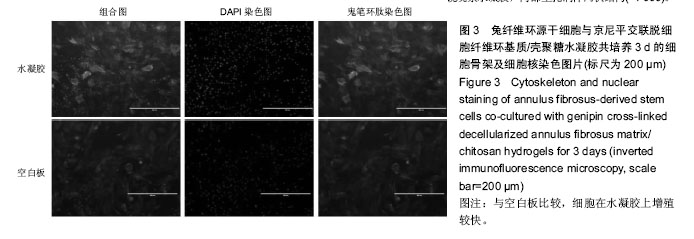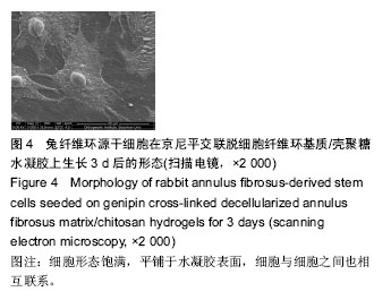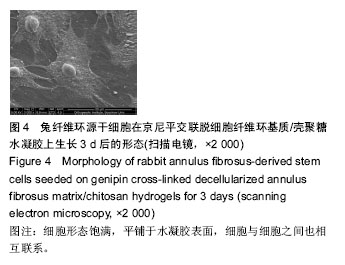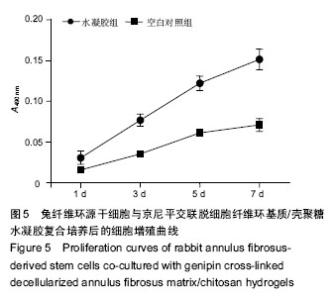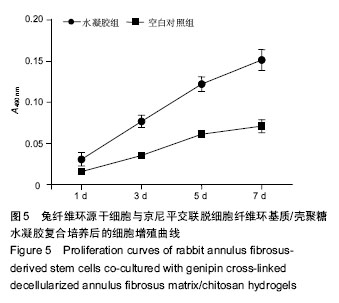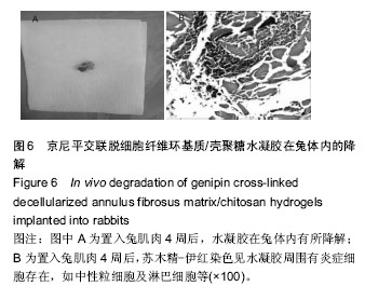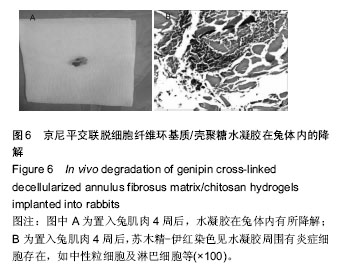| [1] Krock E,Rosenzweig DH,Chabot‐Doré AJ,et al. Painful, degenerating intervertebral discs up‐regulate neurite sprouting and CGRP through nociceptive factors. J Cell Mol Med.2014;18: 1213-1225.[2] Luo X,Pietrobon R,Sun SX,et al.Estimates and patterns of direct health care expenditures among individuals with back pain in the United States.Spine. 2004;29:79-86.[3] Häkkinen A,Kiviranta I,Neva MH,et al.Reoperations after first lumbar disc herniation surgery; a special interest on residives during a 5-year follow-up.BMC Musculoskelet Disord.2007;8:2.[4] Hughes S,Freemont A,Hukins D,et al.The pathogenesis of degeneration of the intervertebral disc and emerging therapies in the management of back pain. J Bone Joint Surg Br. 2012;94(10):1298-1304.[5] Iatridis JC.Tissue engineering: Function follows form. Nat Mater.2009;8:923-924.[6] Alini M,Roughley P,Antoniou J,et al.A biological approach to treating disc degeneration: not for today, but maybe for tomorrow.Eur Spine J.2002;11: S215-S20.[7] Liu C,Guo Q,Li J,et al.Identification of Rabbit Annulus Fibrosus-Derived Stem Cells. PloS one. 2014;9: e108239.[8] 刘晨,王晟昊,王奕彬,等.兔纤维环干细胞与猪脱细胞纤维环基质的生物相容性[J].中国组织工程研究, 2014,18(41): 6655-6660.[9] Qing G,Wang X,Jiang L,et al.Saccharide-sensitive wettability switching on a smart polymer surface.Soft Matter.2009;5:2759-2765.[10] Park SH,Gil ES,Mandal BB,et al.Annulus fibrosus tissue engineering using lamellar silk scaffolds.J Tissue Eng Regen Med.2012;6:s24-s33.[11] Vadalà G,Mozetic P,Rainer A,et al.Bioactive electrospun scaffold for annulus fibrosus repair and regeneration.Eur Spine J.2012;21:20-26.[12] Nerurkar NL,Han W,Mauck RL,et al.Homologous structure–function relationships between native fibrocartilage and tissue engineered from MSC-seeded nanofibrous scaffolds.Biomaterials.2011;32:461-468.[13] Nerurkar NL,Sen S,Huang AH,et al.Engineered disc-like angle-ply structures for intervertebral disc replacement.Spine.2010;35:867.[14] Chou AI,Bansal A,Miller GJ,et al.The effect of serial monolayer passaging on the collagen expression profile of outer and inner anulus fibrosus cells.Spine. 2006;31:1875-1881.[15] Kluba T,Niemeyer T,Gaissmaier C,et al.Human anulus fibrosis and nucleus pulposus cells of the intervertebral disc: effect of degeneration and culture system on cell phenotype.Spine.2005;30:2743-2748.[16] Evans C.Potential biologic therapies for the intervertebral disc.J Bone Joint Surg.2006;88:95-98.[17] See EYS,Toh SL,Goh JCH.Effects of Radial Compression on a Novel Simulated Intervertebral Disc–Like Assembly Using Bone Marrow–Derived Mesenchymal Stem Cell Cell-Sheets for Annulus Fibrosus Regeneration.Spine.2011;36:1744-1751.[18] Gruber HE,Hoelscher GL,Leslie K,et al. Three-dimensional culture of human disc cells within agarose or a collagen sponge: assessment of proteoglycan production. Biomaterials. 2006;27: 371-376.[19] Gruber HE,Fisher Jr EC,Desai B,et al.Human intervertebral disc cells from the annulus: three-dimensional culture in agarose or alginate and responsiveness to TGF-β1. Exp Cell Res. 1997;235: 13-21.[20] Shao X,Hunter CJ.Developing an alginate/chitosan hybrid fiber scaffold for annulus fibrosus cells.J Biomed Mater Res A.2007;82(3):701-710.[21] Ledet EH,Jeshuran W,Glennon JC,et al.Small intestinal submucosa for anular defect closure: long-term response in an in vivo sheep model.Spine. 2009;34:1457-1463.[22] Le Visage C,Yang SH,Kadakia L,et al.Small intestinal submucosa as a potential bioscaffold for intervertebral disc regeneration.Spine.2006;31:2423-2430.[23] Turner KG,Ahmed N,Santerre JP,et al. Modulation of annulus fibrosus cell alignment and function on oriented nanofibrous polyurethane scaffolds under tension.Spine J. 2014;14:424-434.[24] Yeganegi M,Kandel RA,Santerre JP.Characterization of a biodegradable electrospun polyurethane nanofiber scaffold:mechanical properties and cytotoxicity.Acta Biomaterialia.2010;6:3847-3855.[25] Nerurkar NL,Elliott DM,Mauck RL.Mechanics of oriented electrospun nanofibrous scaffolds for annulus fibrosus tissue engineering.J Orthop Res. 2007;25: 1018-1028.[26] Dong SW,Ying DJ,Duan XJ,et al.Bone regeneration using an acellular extracellular matrix and bone marrow mesenchymal stem cells expressing Cbfa1.Biosci Biotechnol Biochem. 2009;73(10): 2226-2233.[27] Cheng HLM,Loai Y,Beaumont M,et al.The acellular matrix (ACM) for bladder tissue engineering: A quantitative magnetic resonance imaging study.Magn Reson Med. 2010;64(2):341-348.[28] Böer U,Lohrenz A,Klingenberg M,et al.The effect of detergent-based decellularization procedures on cellular proteins and immunogenicity in equine carotid artery grafts.Biomaterials.2011;32(36):9730-9737.[29] Di Martino A,Sittinger M,Risbud MV.Chitosan: a versatile biopolymer for orthopaedic tissue- engineering. Biomaterials.2005;26(30):5983-5990.[30] Vandevord PJ,Matthew HWT,Desilva SP,et al. Evaluation of the biocompatibility of a chitosan scaffold in mice.J Biomed Mater Res. 2002;59(3):585-590. |
